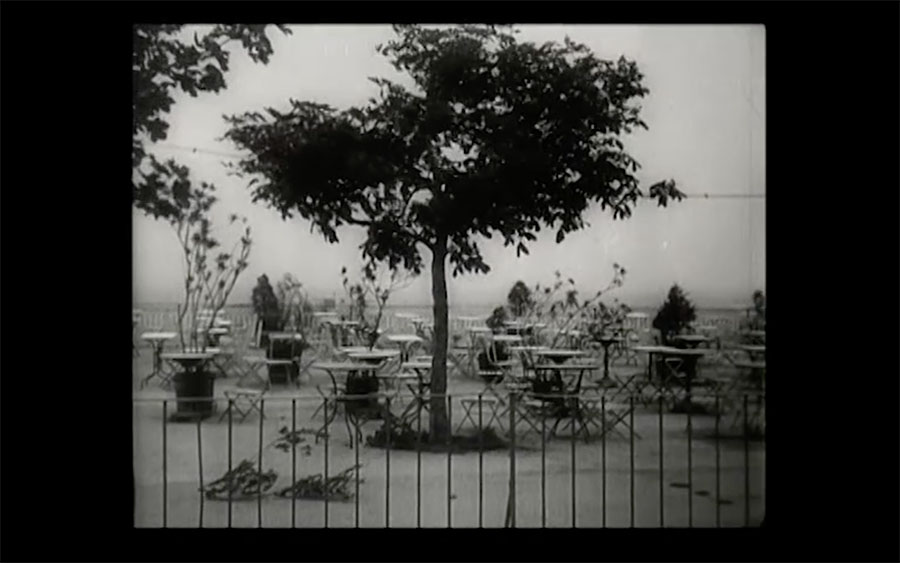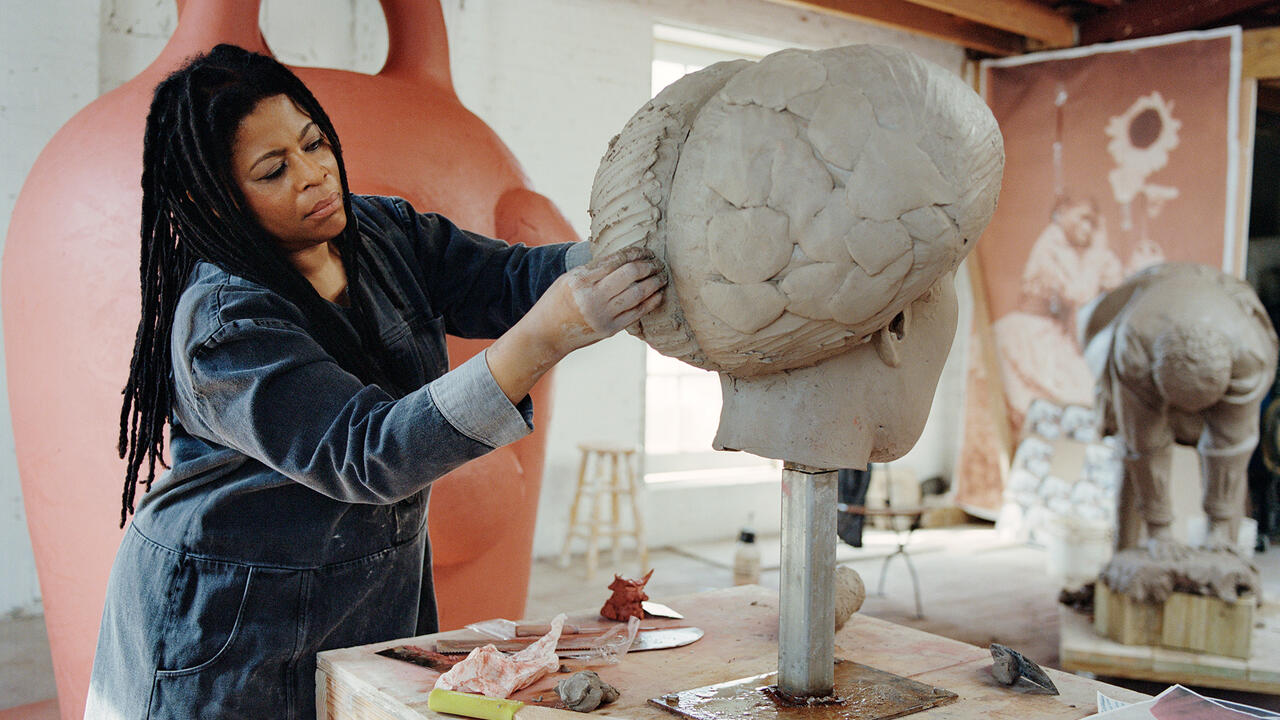Critic’s Guide: Glasgow International’s Digital Programme
From the sweet solitude of early sunrise to the existential dread of late-night listening, these works will tide you over
From the sweet solitude of early sunrise to the existential dread of late-night listening, these works will tide you over

For audiences disappointed by the postponement of Glasgow International (GI) 2020, four new commissions and three existing works have been made available on the festival’s website from 24 April to 31 May, when it was due to take place. As a tiny fraction of the ambitious original programme, these digital works signal a tentative engagement with online festival and exhibition formats. In contrast, see the postponed Toronto-based Images Festival who last month hosted 29 live stream screenings and discussion events during the week they were scheduled to run, or the widespread relocation of upcoming degree shows to virtual spaces by UK art schools. Final-year students have, in response, organized the nationwide #pauseorpay campaign, advocating for colleges to partially reimburse them or to allow them to complete their education post-lockdown. In light of the alternatives, GI’s decision to opt for a year-long postponement and to offer a small collection of works as an immediate placeholder may serve as a model for adjusted rates of productivity, recognizing that during periods of intensive mourning and precarity, expectations of output ought to shift.

business as usual (2020) by Alberta Whittle
In business as usual: hostile environment, Whittle begins with statistics that reveal the higher rates of Covid-19 infection and death amongst the UK’s BAME populations, followed by audio from an interview with one of the many nurses working for the NHS who face deportation under new immigration laws due to be introduced next year. Here, Whittle draws a parallel with the findings of the Windrush Report, released in March this year, which presents evidence that harmful immigration policies are the result of ‘the public’s and officials’ poor understanding of Britain’s colonial history’. Resisting widespread erasure of Black history, Whittle introduces rarely seen archival footage of Black NHS nurses, as well as videos of Black dancers at formal ballroom competitions, interracial tea dances, a street carnival and a voguing ball. Overlaying imagery from disparate contexts and eras, Whittle synthesizes a vision of continuous Black survival and resistance to the lethal racism of insidious state policy.

Give us a Meow (2019) by Urara Tsuchiya
Give Me a Meow begins with slapstick, as the artist hauls herself through the small window of a cottage. Inside, she teeters around on stiletto heels, sometimes surging into rhythmic jolting to the soundtrack of ritualistic drumming. Then, like a lethargic Goldilocks, she crawls exhaustedly to bed. Lackadaisically, she takes selfies instead of sleeping before continuing her tour of the house, finally reaching the bathroom where she strikes a pose for the camera and clenches her face into a forced-sweet smile. Throughout the video, Tsuchiya’s costumes change from scene to scene: animal-print dresses and jumpsuits, in clinging shiny-bright fabrics, are sometimes layered with faux-fur housecoats. The artist’s perfectly performed sleepwalking and cavorting subvert the rejuvenative associations of this middle-class family home and its countryside setting. In Give me a Miaow, the location becomes a site of confusion, boredom, mania and disorientation. The work is camp, funny and a clever pleasure from start to finish.

The Unreliable Narrator (2019) by Sarah Forrest
In The Unreliable Narrator, Forrest looks to the dexterity of a magician’s shuffling as he repeatedly throws cards with precision and cuts the deck magnificently into quarters that he then spins in and out of one another. Drama comes in his insistent thumping-down of the cards on the table as he performs the same tricks over and over – as if Forrest is spelling out that his successes aren’t lucky one-offs. The illusionist waves his hands over the deck, wilfully provoking the audience, stagily challenging their suspicions, while the film subtly colludes with his trickery. Although obvious cuts serve to reassure viewers that the artist isn’t using sophisticated technology to doctor the footage, the edits nevertheless are paced to heighten the drama of these showy movements.

Some People Say (2020) by Liv Fontaine
Like a late-night broadcast from an experimental radio station, Liv Fontaine’s new audio work, Some People Say, features the artist speaking loudly and close to the microphone. The vocal track is gently textured with pitchy distortion. Fontaine screams, moans and whimpers about the straining contradictions of feminine identities (‘I’m violently vengeful, I’m sickly sweet!’), her personal experience of having sex while suffering from a severe skin disorder, and infamous pop-cultural scandals surrounding extreme breast augmentation. Some jokes miss the mark and there are a couple of awkward rhymes (‘I’m a[n] eager beaver, a high achiever’). Nevertheless, when played in the dark after midnight, the reverb, squeals and rumble of the guitar create an otherworldly soundscape, its atmosphere tinted with existential dread.

Everything Flows – distance (2020) and Everything Flows – interval (2018) by Yuko Mohri
For the early riser, a shorter sleep is the trade-off for the grace period before the rumble of traffic and emails. It’s at this point in the day that Mohri’s Everything Flows films are best watched at home. The artist has made new edits of Yasujirō Ozu’s Tokyo Story (1953) and Dziga Vertov’s Man with a Movie Camera (1929). Small movements set the pace in interval (2018), like the swaying sheet on the balcony of a building that’s seen from an oblique, vertiginous angle. Delicate visual interconnections are made between slow-moving clouds in an overcast sky, plumes of smoke and an engine’s steam viewed from the roof of a train. With a sensitivity to pace, each scene precipitates the next through careful accelerations and slowdowns. In distance (2020), Mohri deftly isolates shots of unpeopled settings, poignantly evoking both the sweet solitude that comes before sunrise but also, at times, the eerie aftermath of an emergency evacuation. Watching distance in enforced isolation, while anticipating a future split between greater freedom, death and economic depression, the film’s ambivalence of hope and sinister uncertainty feels all too familiar as the day begins again.
Main image: Alberta Whittle, business as usual: hostile environment, 2020, video still. Courtesy: the artist






















